Japan is an interesting country that many westerners find fascinating.
One question that’s asked a lot is do Japanese police carry guns?
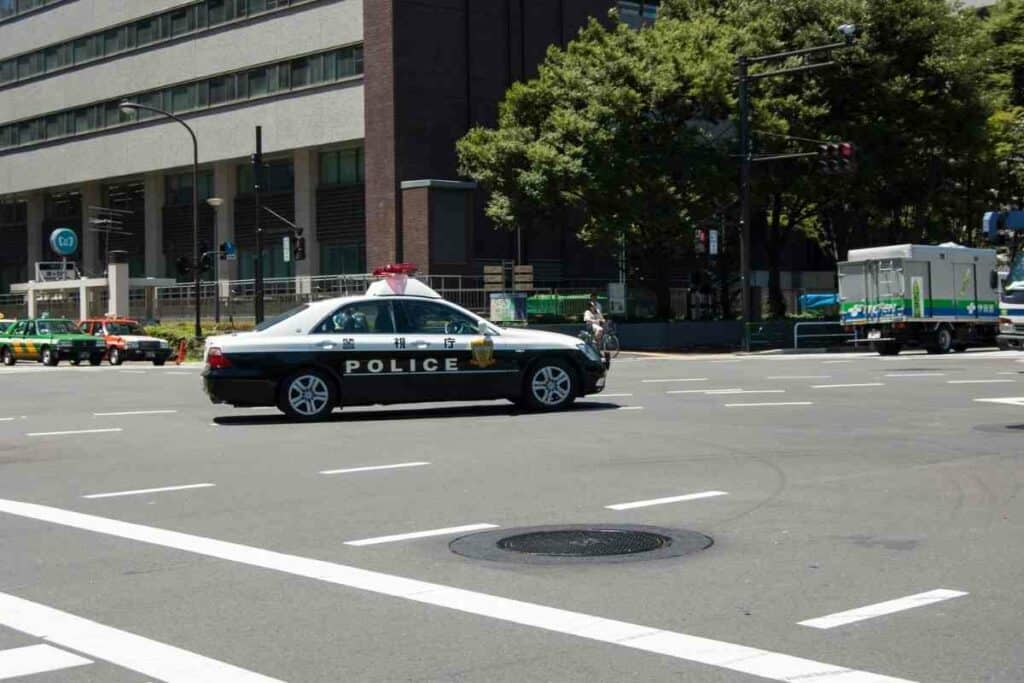
The quick answer is yes, Japanese police do carry guns. In fact, ever since 1949, it has been part of the Japanese police force’s standard equipment. Carrying a handgun was first introduced after World War II when the allies occupied Japan.
Let’s explore this in more detail.
Table of Contents
What guns do Japanese police use?
In Japan, uniformed officers carry a New Nambu Model 60 handgun as standard.
This gun takes its name from its designer: Kijiro Nambu.
Until the 1960s, they carried Smith & Wesson M36 like American police officers but have been using the New Nambu Model 60 ever since.
This gun is a double-action revolver that is based upon Smith & Wesson gun designs.
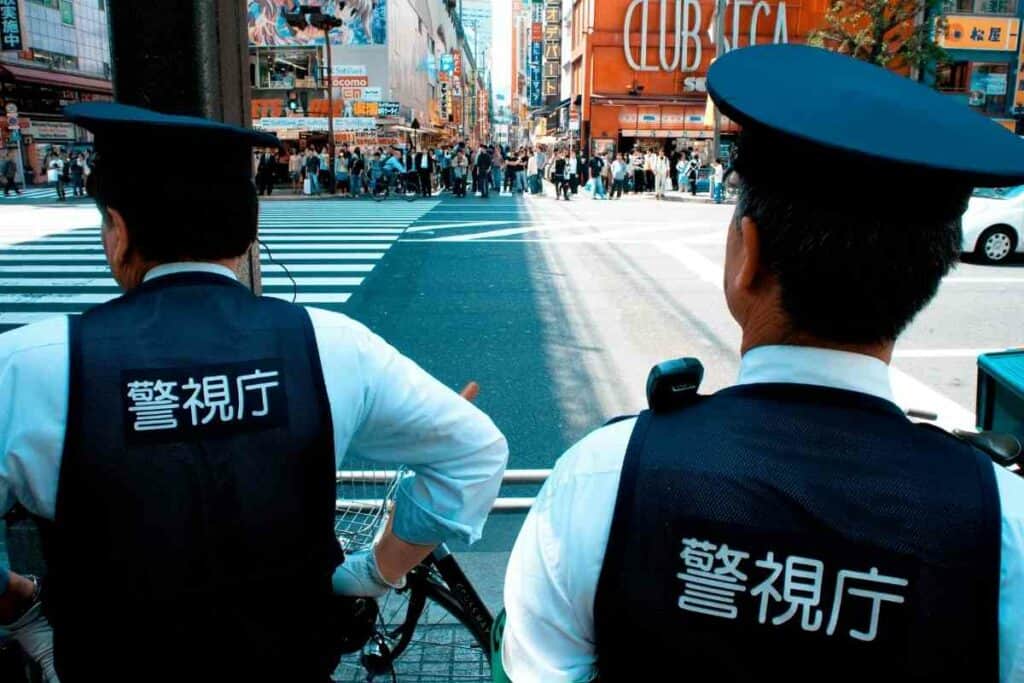
It is a .38 special caliber handgun that also goes by the name S&W M37 due to its close resemblance to the Smith & Wesson M36.
When many westerners see this gun, they often notice how old-fashioned it seems.
It holds five bullets and looks similar to revolvers that you see being used by Kojak and Columbo.
Why do Japanese police officers use old model guns?
After the Second World War, General Douglas MacArthur, the Allied Powers Supreme Commander, suggested that Japanese police officers carry handguns like American police offers.
For this reason, they began using the same model American police carried.
They upgraded to their current model in the 1960s, which back then, was a new model.
Yet, over sixty years later, they’re still using the same model as they have never felt the need for an upgrade.
Here’s why.
Japanese Gun Facts
According to the most recent data from gunpolicy.org, there were only nine deaths resulting from firearms in 2018, and all nine were males.
What’s more, only 0.16% of the population are licensed firearm owners.
If we included illicit firearms in this figure, estimates believe there to be 0.25% of people who own a gun.
As a comparison, the percentage of households in the United States that own at least one gun was 47% in 2017.
What’s More – In the same year when there were only nine deaths in total in Japan, there were 12.15 gun-related deaths per 100,000 people in the U.S.
This equates to more than 14.5 thousand in total. The population of the U.S. is just under three times that of Japan, so there’s a marked difference in numbers.
The results are clear to see: with so few guns in possession, the deaths caused by guns are staggeringly low.
It’s also because of this that the Japanese police force has never seen the need to upgrade their standard-issue handguns to anything more modern – it’s just simply not needed.
So, how come gun ownership is so low in Japan?
Japanese Gun Laws
In order to understand the position of the Japanese on guns, let’s take a brief look at the history of Japan.
In modern history, the Japanese have used aggressive tactics to expand their empire.
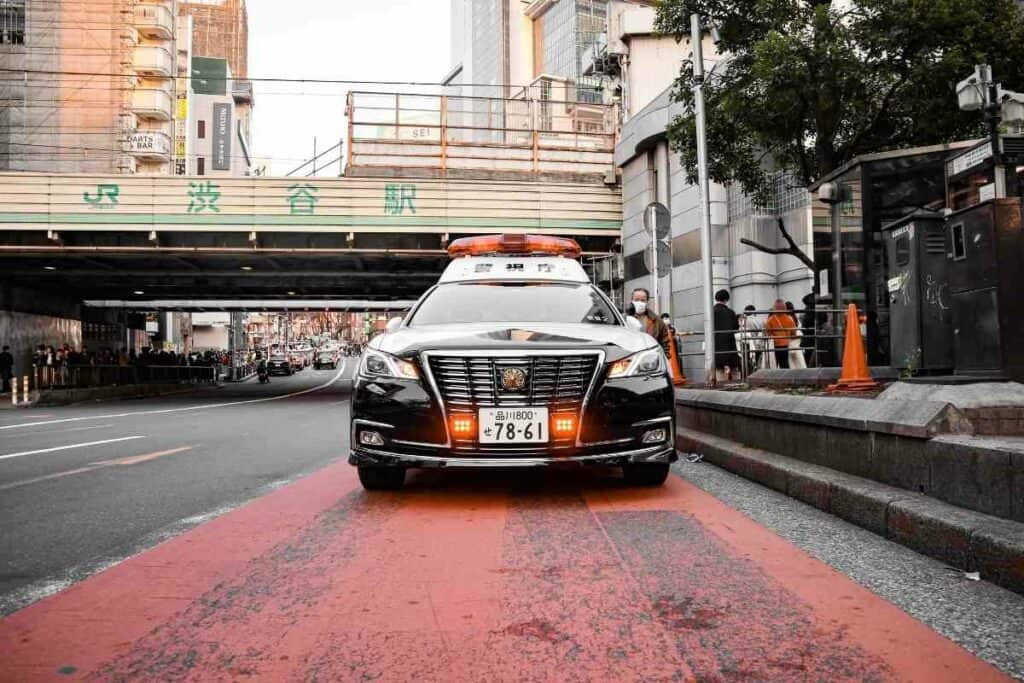
Between 1868 and 1947, the country took over many colonies, including Taiwan in 1895 and Korea in 1910.
During the Second World War, they also occupied/controlled:
- Thailand
- Singapore
- Indonesia
- Malaysia
- Laos
- Cambodia
- and Vietnam
Thus, the country developed a reputation as being a nation of warriors.
After the end of World War II, the Japanese government decided to introduce a new peace clause into its constitution.
This clause (Article 9) renounced war and also banned Japan from keeping armed forces.
This was done by the country’s own initiative with the idea that it would become a nation that was more pacifist that would be prevented from being an aggressive military nation again in the future.
With this new clause, the country vowed to never have air, land, or sea forces and instead would only operate a Self-Defense Force.
This force is purely designed to be used inside of Japan and its waters.
Read Next ?
Firearm law in Japan
In 1958, the Firearm and Sword Possession Control Law (銃砲刀剣類所持等取締法) was passed.
This states that citizens are not allowed to bear arms. The law has been revised a number of times but made stricter each time.
Who can own a gun in Japan?
Most people in Japan have no interest in owning a gun.
Due to the strict laws, gun ownership has always been thought of as dangerous.
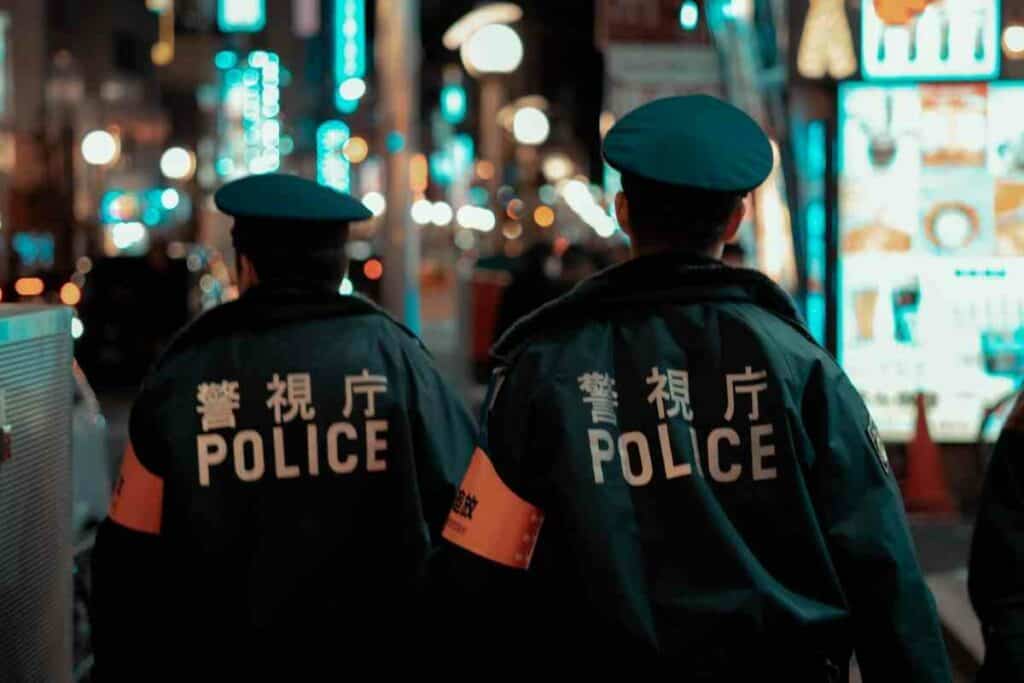
Possessing a gun (or parts of one) is limited to police and other law enforcement or public officials and members of the Self-Defense Force.
Members of the public can obtain permission from the Japanese government to use guns for specific purposes.
These include:
- Target shooting
- Hunting
- Manufacturers
- Firearm dealers
- Firearm exporters
- Athletes (competitors in national/international tournaments)
- Antique gun collectors
Read Next ?
Other restricted items
It’s not just firearms and weapons that are heavily controlled, drugs also have strict regulations.
Using any form of drugs is highly illegal – you can even have a five-year jail sentence on a first cannabis offense without exception.
Japanese Police Officers – interesting facts
There are around 262,000 police officers in Japan, of which 23,400 are female.
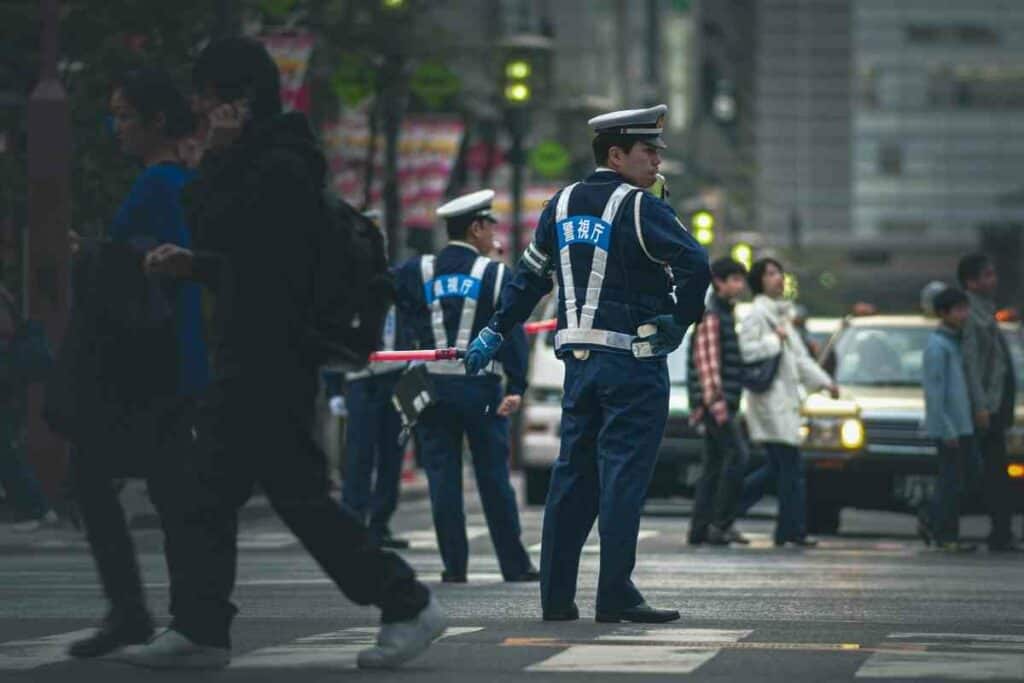
In terms of metropolitan police forces, Tokyo has the World’s biggest with over 43,000 officers, making it bigger than the New York City Police Department’s 36,000.
No wonder Japan has one of the lowest crime rates in the world.
Final thoughts on do Japanese police carry guns?
So now you know, Japanese police do carry guns – and they carry a pretty antiquated one at that.
The truth is gun use in Japan is so rare. You’re much more likely to see a police officer use his bare hands to take someone down.
Japanese police training is very strict and incorporates lots of different skills, including being trained in foreign languages and criminal forensics.
They’re also trained in two martial arts like kendo and judo too.
And because people fear guns so much (and the harsh realities of going to prison in Japan), they’re not really needed.
Also Read
- 12 Things Tourists Should NEVER Say in Japan
- Kissing Robot: Exploring the Popularity of the Chinese Kissing App
- Unlocking the Secret Dating Rituals Only Locals Know in Japan
- Samurai Armor: Ancient Protection for Japan’s Elite Warriors
- 10 Amazing Facts About Schools in Japan: Unique Traditions and Educational Practices
- Where can you see snow monkeys in Japan: Best locations and viewing tips









